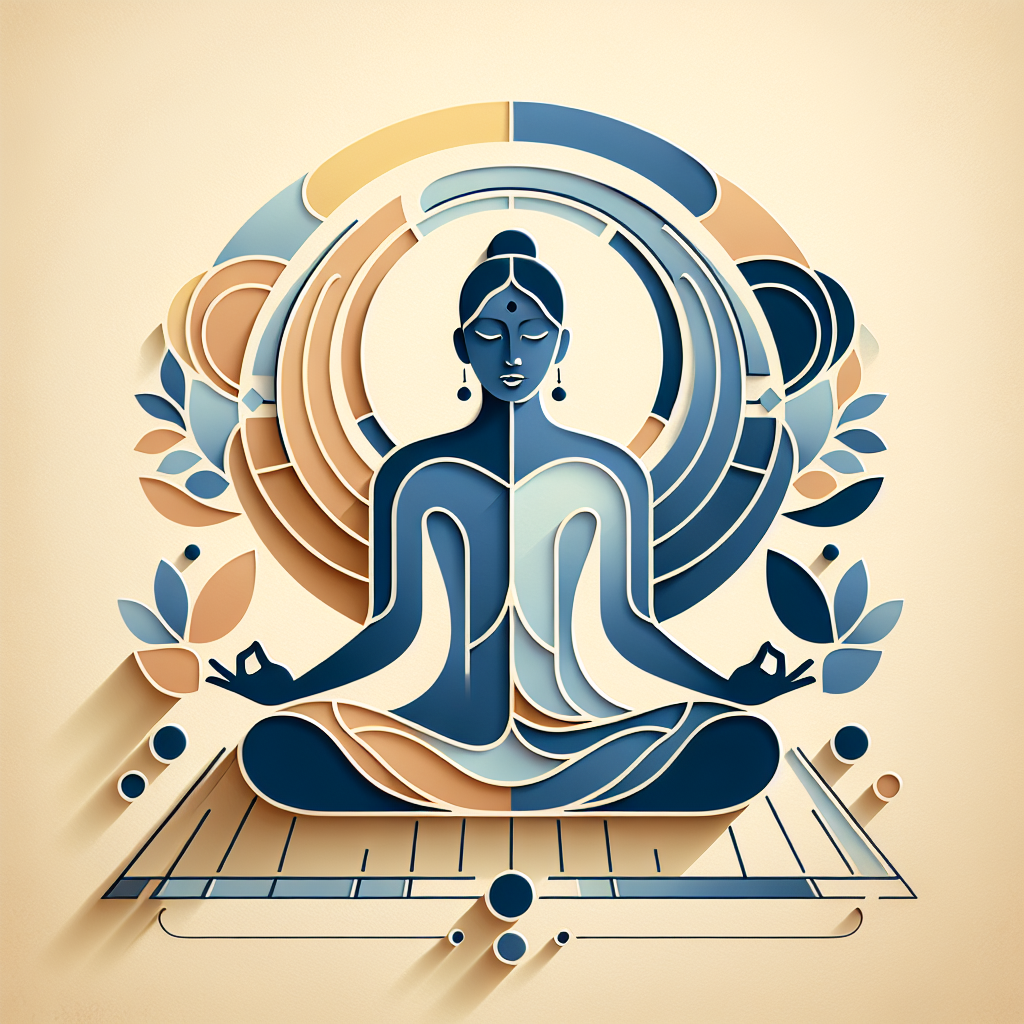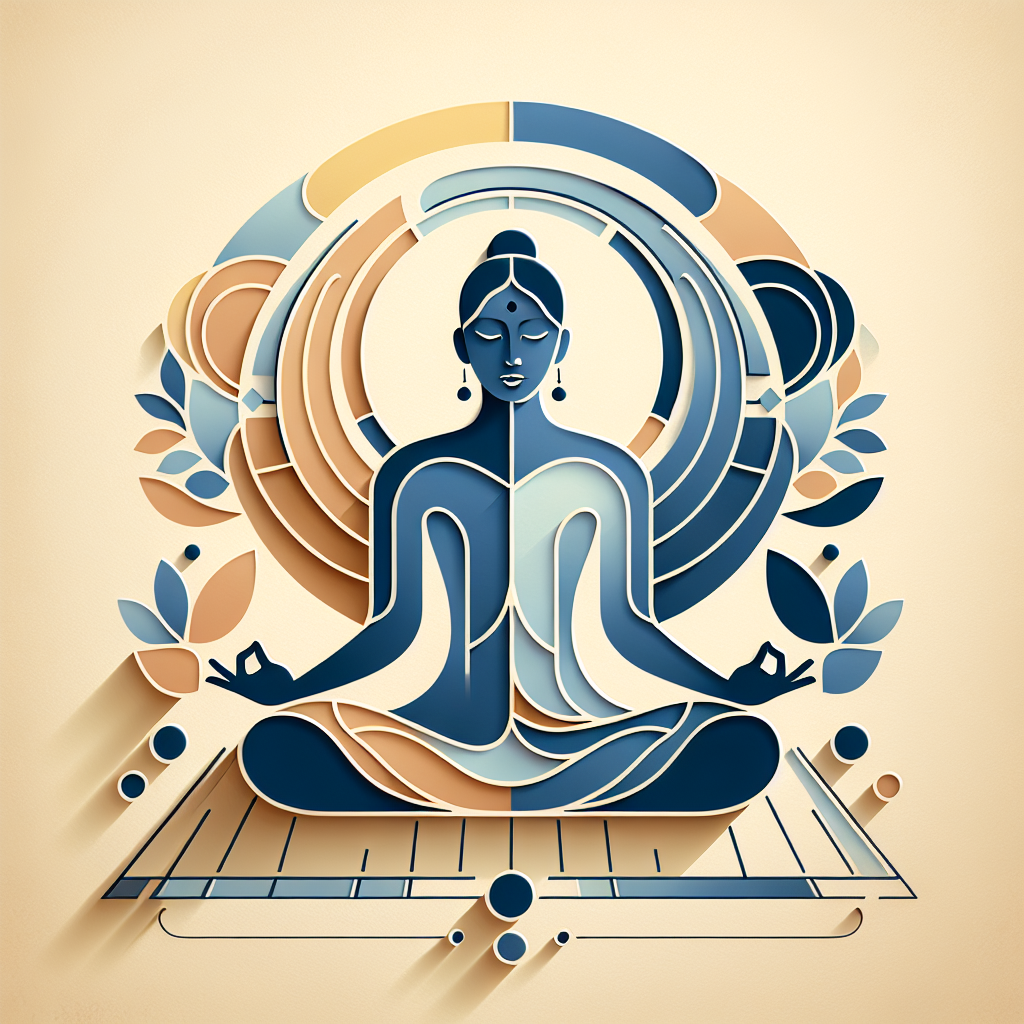So you’re interested in meditation and want to know the five basic steps to get started? Well, you’ve come to the right place! In this article, we will explore the fundamental techniques required for meditation. Whether you are a beginner or looking to refresh your existing practice, these five steps will help you achieve a state of calm and self-awareness. So, let’s jump right in and discover the pathway to inner peace and tranquility through meditation.

Choosing a Comfortable Position
Sitting or lying down
When it comes to meditation, one of the first things you need to consider is the position in which you will be most comfortable. Some people prefer to sit cross-legged on a cushion, while others find it more relaxing to lie down. The key is to choose a position that allows you to relax and focus without any unnecessary strain on your body. Experiment with different positions to find what works best for you.
Finding a quiet space
To truly immerse yourself in meditation, it’s important to find a quiet space where you can be free from distractions. Whether it’s a dedicated meditation room or simply a quiet corner of your home, the goal is to create an environment that allows you to focus inward. Turn off any electronics, close the door, and let others in your household know that you need some uninterrupted time. This will help you create a peaceful atmosphere conducive to deep relaxation.
Using props if needed
If you’re finding it difficult to maintain a comfortable position on your own, don’t be afraid to use props to support your body. Pillows or cushions can be placed under your knees or back to alleviate tension and provide extra support. A folded blanket can also be placed under your feet to elevate them slightly, relieving any pressure or discomfort. Remember, the goal is to find what works best for you, so don’t hesitate to make use of any props that can enhance your comfort and relaxation.
Relaxing the Body
Tensing and releasing muscles
Before diving into the practice of meditation, take a few moments to relax your body by tensing and releasing your muscles. Starting from your toes and moving up to your head, progressively tense each muscle group and then release the tension. This helps to relieve any residual tension or stress in your body, allowing you to enter a deep state of relaxation.
Deep breathing
Deep breathing is a fundamental technique in meditation that helps to calm the mind and relax the body. Take slow, deep breaths, filling your lungs completely and then exhaling slowly. As you breathe in, visualize positive energy entering your body, and as you breathe out, imagine any negativity or tension leaving. Pay attention to the rise and fall of your abdomen with each breath, allowing yourself to become fully present in the moment.
Body scan meditation
Another effective technique to relax the body is body scan meditation. This practice involves systematically moving your attention through each part of your body, from head to toe, noticing any sensations or areas of tension. As you become aware of these areas, consciously relax them, allowing any tension to melt away. Body scan meditation promotes a sense of deep relaxation and helps to release any physical discomfort or stress you may be holding onto.
Focusing the Mind
Concentration meditation
Concentration meditation is a powerful technique that helps to sharpen your focus and develop mental clarity. To practice this form of meditation, choose an object, such as a candle flame or a picture, and fix your attention on it. As thoughts arise, gently bring your attention back to the object of focus. With regular practice, concentration meditation can improve your ability to stay present and centered, both during meditation and in your daily life.
Breath awareness
Breath awareness is a simple yet profound meditation technique that involves focusing on your breath. Pay attention to the sensation of your breath entering and leaving your body, without trying to control or manipulate it. Notice the rise and fall of your chest, the feeling of the air passing through your nostrils, and the rhythm of your breath. Breath awareness helps to anchor your mind in the present moment and cultivate a sense of inner calm.
Mantra meditation
Mantra meditation involves repeating a word or phrase silently or out loud to focus the mind and promote a state of relaxation. Choose a mantra that resonates with you, such as “peace” or “love,” and repeat it in a steady rhythm as you breathe. Allow the sound and vibration of the mantra to quiet any distracting thoughts and bring your attention into the present moment. With practice, mantra meditation can bring about a deep sense of peace and clarity.
Observing Thoughts and Emotions
Non-judgmental awareness
As you progress in your meditation practice, it’s important to cultivate a non-judgmental awareness of your thoughts and emotions. Rather than labeling them as good or bad, simply observe them without attachment or judgment. Recognize that these thoughts and emotions arise and pass away, like clouds moving across the sky. By developing a non-judgmental awareness, you can cultivate a sense of inner peace and detachment from the fluctuations of your mind.
Noticing thoughts and emotions
During meditation, it’s common for various thoughts and emotions to arise. Instead of getting caught up in them or trying to push them away, simply notice their presence. Observe them as if you were watching a movie or witnessing a passing parade. By acknowledging and accepting these thoughts and emotions without judgment, you can develop a greater sense of self-awareness and detachment from their influence.
Letting go of attachments
One of the ultimate goals of meditation is to let go of attachments, whether they are to thoughts, emotions, or external circumstances. In meditation, practice detachment by observing your attachments and then consciously releasing them. Recognize that holding onto attachments causes unnecessary suffering, and by letting go, you can experience a greater sense of peace and freedom. Allow your thoughts and emotions to come and go, without becoming entangled in their grip.

Ending the Meditation
Gradually returning to awareness
As your meditation session comes to a close, it’s essential to transition back to your everyday awareness gradually. Begin by becoming aware of your body and your surroundings. Wiggle your toes, move your fingers, and gradually bring your attention back to the physical sensations in your body. Take a few deep breaths and allow yourself to fully re-engage with the world around you. This gradual transition helps to integrate the benefits of your meditation practice into your everyday life.
Stretching and moving
To support the return to physical awareness and prevent any stiffness or discomfort, take a moment to stretch and move your body. Gently roll your shoulders, rotate your neck, and stretch any muscles that may feel tense or tight. This physical movement helps to promote circulation, release any lingering tension, and re-energize your body after the deep relaxation of meditation.
Reflecting on the experience
After completing your meditation session, take a few moments to reflect on your experience. Notice any changes in your thoughts, emotions, or physical sensations. Consider whether you feel more centered, calm, or present compared to before the practice. Reflecting on your meditation experience can help you understand the benefits of your practice and encourage you to continue incorporating meditation into your daily routine.
Meditation is a powerful tool for relaxation, self-awareness, and overall well-being. By following these five basic steps—choosing a comfortable position, relaxing the body, focusing the mind, observing thoughts and emotions, and ending the meditation—you can cultivate a deep sense of inner peace and tranquility. Remember, meditation is a personal journey, so be patient with yourself and allow yourself to fully embrace the process. With regular practice, you’ll soon discover the transformative power of meditation in your life.
